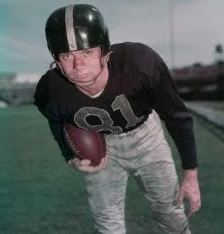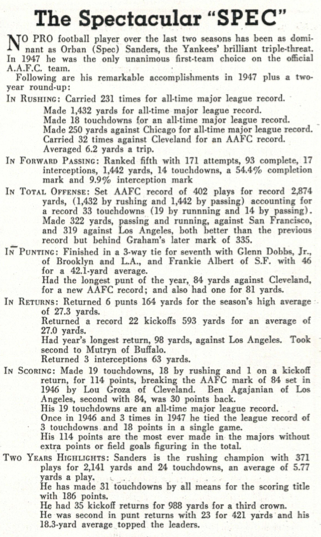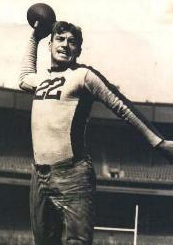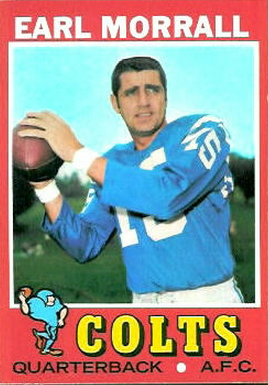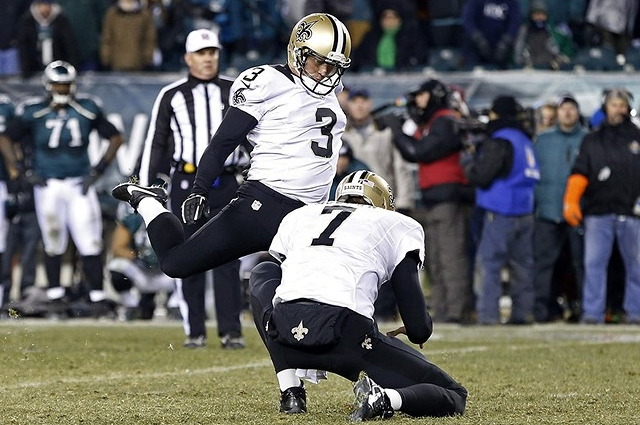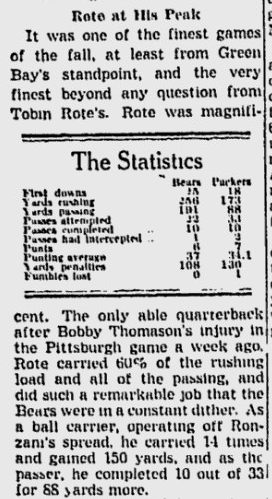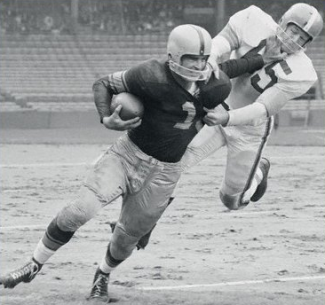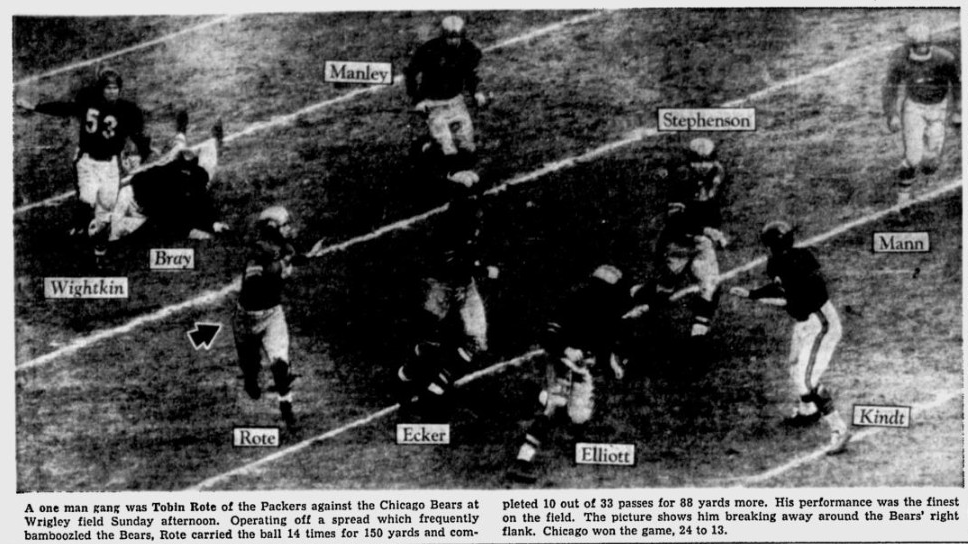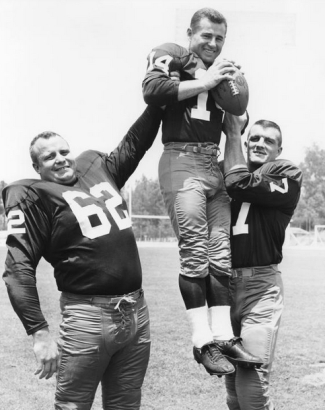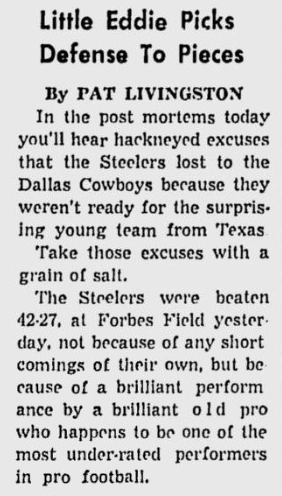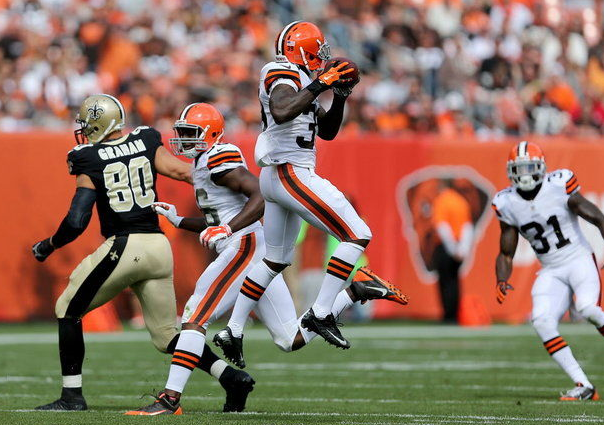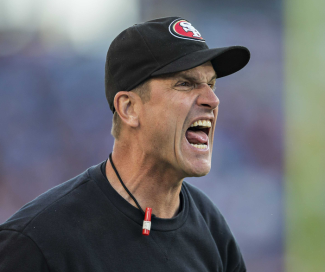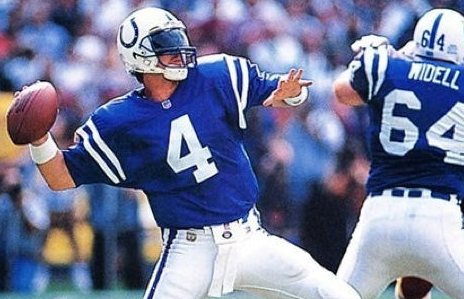Spent the better part of the morning trying to put together sets of Triplets — quarterback, running back, receiver — who share the same last name (even if they didn’t play on the same club or in the same era). There was no fudging allowed, either. For instance, you couldn’t try to team Kerry Collins with Cris Collinsworth or Trent Green with BenJarvus Green-Ellis or, heaven forbid, Rob Gronkowski with Bruce Gradkowski. The receiver could, however, be a wideout or a tight end. The rules weren’t totally inflexible.
Anyway, it was harder than I thought it would be. There just aren’t many surnames that are very common in NFL/AFL history. I almost hurled my laptop, Frisbee style, when I was two-thirds of the way to paydirt with Jim and Leroy Kelly — Hall of Famers both — but couldn’t come up with a receiver any better than Reggie, the underwhelming tight end for the Bengals and Falcons.
Smith is another one. You’d think that would be a gimmie — Emmitt at running back, Jerry (or Jimmy or Steve or Rod or Jerry) at receiver and . . . good luck finding a quarterback worth a darn.
If you work at it, though, you can dig up some nice threesomes. Here are my nominees for:
BEST SETS OF TRIPLETS SHARING THE SAME LAST NAME
[table width=”450px”]
Last name,Quarterback,Running Back,Receiver
Young,Steve*,Buddy*,Charle (TE)
Johnson,Brad,John Henry*,Calvin
Sanders,Spec,Barry*,Charlie* (TE)
[/table]
*Hall of Famer
Only a few of these guys didn’t make at least one Pro Bowl or — in the case of pre-Pro Bowl players — all-pro team. Flipper Anderson didn’t, for example, but, hey, he holds the record for receiving yards in a game (336). In fact, he’s held it for 25 years, which is pretty remarkable considering how long receiving marks tend to last. And granted, Scott Mitchell was nothing special as a quarterback, but he did throw 32 touchdown passes one year for the Lions.
The first three listed are my gold, silver and bronze medalists. As for the others, you can order them however you like. I’m not sure it makes much difference. It’s kind of cool, by the way, that
Dub and Bert Jones are a father-son pairing. Dub, of course, is one of three NFL players to score six TDs in a game.
One last thing: I was fibbing about the no-fudging rule. Spec Sanders wasn’t technically a quarterback; he was a single-wing tailback for the New York Yankees of the All-America Conference in the ’40s. (He did play one season in the NFL, however, and intercepted 13 passes as a DB to lead the league.)
I included Spec because in 1947 he had one of the greatest offensive seasons of all time, throwing for 1,442 yards and 14 touchdowns and rushing for 1,432 yards and 18 TDs. (In his spare time, he ran a kickoff back 92 yards for another score.)
One day I spent a couple of hours on the phone with him, reminiscing about his playing days. He was utterly self-effacing, not the least bit impressed with his football feats. Just makes me want to keep his name alive.

